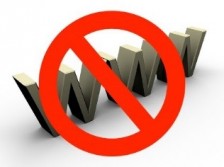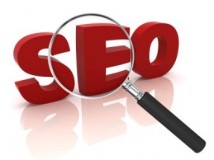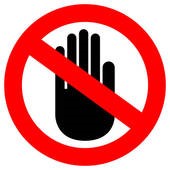Some of the Biggest Mistakes Small Businesses Make With Their Websites
The world wide web started as a single website in 1991 and by 1994 th_237x167.png) ere were around 3,000 websites. By September 2014 the world wide web housed more than 1 billion websites. The internet is now a jungle and the competition for keywords is fierce with every business trying to appear on the first page of Google’s search results.
ere were around 3,000 websites. By September 2014 the world wide web housed more than 1 billion websites. The internet is now a jungle and the competition for keywords is fierce with every business trying to appear on the first page of Google’s search results.
Consumer behaviour has changed and they now turn to the internet to research products and services as part of the buying process. In Australia most start with a Google search and consumers have embraced the convenience of online shopping. Their favourite tool is their smart phone or tablet and we know that the majority of website traffic is now coming from mobile devices like smart phones and tablets, not desktop computers. A recent US survey (March 2017) indicated that consumers primarily turn to small business websites for product information, (44.9% stated this as their top reason), 21% to check on opening hours, 18.7% for contact information and 5.5% for directions.
Potential new customers will pass judgement on your business in seconds based on their online experience and you only get one chance to make a good first impression. An amateurish website is a ‘customer killer’ and without a website you’re simply not in the online contest.
According to the 2015 survey (released in June 2016) from the Australi an Bureau of Statistics, more than half of all Australian business are invisible online. The IT Use and Innovation in Australian Business survey sampled 6,640 Australian businesses and found only 47.1 percent of businesses had a website. The survey highlighted the fact that 63 percent of micro-businesses with four staff or less and 41.9 percent of small businesses with between five and 19 staff don’t have a web presence. Surprisingly, even 19 percent of medium-sized enterprises (with between 20 and 199 employees) didn’t have a website.
an Bureau of Statistics, more than half of all Australian business are invisible online. The IT Use and Innovation in Australian Business survey sampled 6,640 Australian businesses and found only 47.1 percent of businesses had a website. The survey highlighted the fact that 63 percent of micro-businesses with four staff or less and 41.9 percent of small businesses with between five and 19 staff don’t have a web presence. Surprisingly, even 19 percent of medium-sized enterprises (with between 20 and 199 employees) didn’t have a website.
To be brutally honest, it’s hard to see how a business can achieve its full profit potential without a website. It’s hard to even identify an industry that doesn’t need a website. There’s an old saying, “You can make money or excuses but you can’t make both”. The cost of creating a website has dropped considerably over the past few years and groups like www.havealook.com.au and www.sitesnstores.com.au promise to build basic websites for around $600. It’s time to stop making excuses and start making money!
If you are keen on the ‘do it yourself’ option www.wix.com offer free access to a range of website templates and a content management system. Of course, If you plan to go down the DIY route be aware that your website is often your customers’ first touch point with your brand so if you don’t have the design experience or the writing skills it can soak up a lot of your time and resources. Be careful because your business will be judged in 3 seconds.
Having established the importance of having a website, let’s examine some of the biggest mistakes small businesses owners make with their website.
1. MOBILE RESPONSIVENESS & LOAD TIMES_272x133.jpg)
Mobile marketing isn’t the future, it’s the now. With over half of the Google searches now originating from smartphones and tablets it’s imperative that your website is responsive to mobile devices. Your website must re-size and re-shape according to the device because websites with poor mobile navigation get below average customer conversions and Google punishes the page rankings of non-responsive websites.
Let’s face it, we’ve all abandoned a website that loads at a snail’s pace. Responsive websites do load faster and people are 5 times more likely to leave a website if it isn't mobile-friendly. Cloud services provider Akamai published in their report that the benchmark website loading time is around 2.4 seconds and sites that load at a slower rate suffer a decline in traffic. Not only that, a two-second increase in load times led to customers spending 50% less time on a webpage.
To get an indication of the speed of your site, Google provide a tool that will give you a ranking out of 100 for mobile friendliness, mobile speed and desktop speed. Simply enter your websites URL at https://testmysite.thinkwithgoogle.com/
Without getting too technical, there are a number of ways to speed up your site’s performance including:
- Large, high resolution images can take 10 times as long to load as normal images and large files can drastically slow down page rendering. Image formats like GIF, PNG, and JPEG make up 96% of the entire Internet’s image traffic and can account for most of the downloaded bytes on a page. The fewer bytes the browser has to download the better so always look to compress the size of your images
- Host your site servers as close as possible to your users. In other words, as an Australian website your content distribution servers should be based in Australia.
- Google has recently introduced Accelerated Mobile Pages (AMP) to try and increase the number of fast mobile web pages and increase user enjoyment of their mobile experience. AMP HTML is a stripped-down version of HTML for building light weight web pages.
2. SOCIAL PROOF  Social proof is the concept that consumers will adapt their behaviour to what other people are doing. In other words, they will follow their lead. Statistics show that nearly 9 out of 10 consumers have looked at reviews in the last 12 months to help them make a buying decision and 88% trust online reviews as much as personal recommendations.
Social proof is the concept that consumers will adapt their behaviour to what other people are doing. In other words, they will follow their lead. Statistics show that nearly 9 out of 10 consumers have looked at reviews in the last 12 months to help them make a buying decision and 88% trust online reviews as much as personal recommendations.
The idea is to provide evidence that your product or service actually works. The most effective form of social proof are testimonials from satisfied customers who explain how your product or service has solved their problems or satisfied their needs. The testimonials can be written, video recordings or commentary on social media. Either way, satisfied customers can help convince prospects to take the next step and buy plus they add credibility to your brand.
You should sprinkle these testimonials through your website and wherever possible, include real attributions and photos. Double points for video testimonials. Customer reviews on yelp.com and similar sites add fuel to the fire while Google Reviews are very important, particularly for local searches. Online reviews also provide fresh website content so they contribute to improving your SEO (search engine optimization) and reviews are a signal for Google as one of their ranking factors that determine a page’s position in the search results.
3. LOCAL SEO (Search Engine Optimization)
With 97% of internet users searching for local businesses online, ignore local SEO at your peril. Local SEO assists in attracting local customers who perform searches based on a location, (e.g. “hairdresser in Melbourne”). By optimising your site for local queries you are assisting a new audience to discover your business and your services.
- Get Verified - It’s a simple process to verify your Google My Business listing and onceverified, you can update your name, address, phone number, website address, add the correct categories for your business listing and increase the chances of attracting more local visitors.
- Include a Google Map - by embedding a Google map in your website that links to the Google My Business local listing, you increase potential through add-ons like directions in Google Maps, etc.
- Use meta tags and page content optimised for local keywords - this will depend on your industry and location but it can be beneficial to add suburb names in the title tag and/or meta description to increase clicks as a result of local keyword searches.
- Consistent contact information – don’t swap and change contact information across platforms, use the same contact information on your site, Google Places, Yelp, Facebook, etc.
4. SOCIAL CONNECTION
It’s almost impossible to build a digital presence without mentioning social media channels like Facebook, Instagram and Twitter. Social media statistics released for March 2017 show that 7 in 10 Australians use Facebook (17 million Australian users), 1 in 2 Australians use YouTube and 1 in 5 Australians use Instagram. Your future customers are connected via these social networks and you should endeavour to harness the power of these marketing channels.
It is vitally important for a business to understand its audience and by engaging with customers, listening to their needs and providing help on either your website or via social media channels, there is a higher chance of increased sales conversions.
5. VIDEOS YouTube is the second largest search engine behind Google and around 50% of your website traffic could be coming from mobile devices like smart phones and tablets. These devices double as mini televisions and 55% of people now watch videos online every day. If you still need convincing about the importance of video, you’re 53 times more likely to get a page one listing on Google with video content on your website.
YouTube is the second largest search engine behind Google and around 50% of your website traffic could be coming from mobile devices like smart phones and tablets. These devices double as mini televisions and 55% of people now watch videos online every day. If you still need convincing about the importance of video, you’re 53 times more likely to get a page one listing on Google with video content on your website.
Generation X and Y expect to be able to buy from your website, they want e-commerce facilities and prefer to watch video product demonstrations. They trust video testimonials and want to communicate via social media channels.
6. BLOG
Statistically speaking, businesses that blog attract 55% more website visitors and every time you write a blog post with relevant keywords you’re increasing your chances of prospects finding you via a search engine like Google. Adding regular fresh content distinguishes you from the competitor’s static websites and your blog can position you as an industry expert. When integrated into your social media campaigns on Twitter, Facebook and other channels you are increasing your chances of being found online.
SUMMARY
That’s 6 mistakes to avoid and there are many more we could add to the list o f ‘customer killers’. Some obvious ones to avoid are a dated and crowded look, outdated contact information, stale content and no calls to action or opt-in boxes. Remember, today’s consumers are impatient. You only have a few seconds to prove that your business has the answers to their problem and the right product or service.
f ‘customer killers’. Some obvious ones to avoid are a dated and crowded look, outdated contact information, stale content and no calls to action or opt-in boxes. Remember, today’s consumers are impatient. You only have a few seconds to prove that your business has the answers to their problem and the right product or service.
Your prospective customers turn to Google, your website and social media for answers. They are looking for educational content to help them make an informed buying decision. If your website content includes e-books, whitepapers, videos, infographics, cheat sheets, checklists, research or presentations you’re on the right track. It’s a crowded market and you need the standout website in your industry.
The majority of the billion websites are just ‘electronic billboards’ that simply list the who, what and where of the business. To win traffic, your website needs to do more. We believe the primary purpose of a website is to generate more traffic, convert that traffic into customers and make more money. It should be your hardest working ‘employee’ operating 24/7, 365 days a year and should serve as your marketing hub. It should link to your social media channels and let you communicate with customers and prospects plus a lot more.
Your prospects want to do research, chat with an industry expert, watch your educational videos, read customer reviews and then purchase your goods and services. Fortunately, the internet provides a level playing field so small business can outrank big business in the ‘Google Game’. To do that it must send a clear message, be easy to navigate and provide calls to action to guide your prospects to the next stage of the buying process. Have a look at your home page right now, does it tell your prospects what to do next?
If you want your business to stand out online, you need to treat your website as an investment, not an expense. We have invested heavily in our website and in the re-development phase we documented the process in an e-book titled "The One Simple Secret to Growing Your Business". You can download a copy from the home page of our website and if you need any help turning your website from an static electronic billboard into a lead generation machine contact us today.
Click HERE to download the full edition of The Business Accelerator Magazine for June 2017
Other Articles in This Edition:
Federal Budget – Economic Summary
Small Business - $20k Small Business Immediate Tax Deduction
Small Business - Company Tax Rates
Small Business - Extension of Taxable Payments Reporting to Courier and Cleaning Industries
Small Business - Access to CGT Concessions
Small Business - Looking to Employ Foreign Workers?
Individual Tax Rates
Individuals - Changes to the Medicare levy
Restricting Residential Investment Property Deductions
Individuals - Higher Education Reform
Superannuation - Contributing Proceeds from Downsizing to Superannuation
Superannuation - First Home Super Saver Scheme
GST Changes - Purchasers to Pay GST on New Residential Premises
GST Changes - Digital Currency & Low-Value Imports
Tax Integrity Measures
DISCLAIMER: This document contains general advice only and is prepared without taking into account your particular objectives, financial circumstances and needs. The information provided is not a substitute for legal, tax and financial product advice. Before making any decision based on this information, you should speak to a licensed financial advisor who should assess its relevance to your individual circumstances. While the firm believes the information is accurate, no warranty is given as to its accuracy and persons who rely on this information do so at their own risk. The information provided in this bulletin is not considered financial product advice for the purposes of the Corporations Act 2001.













.jpg)